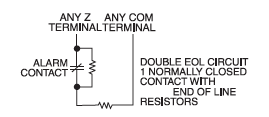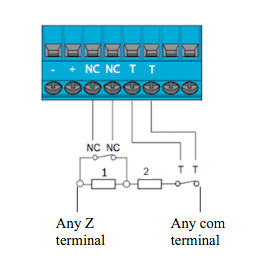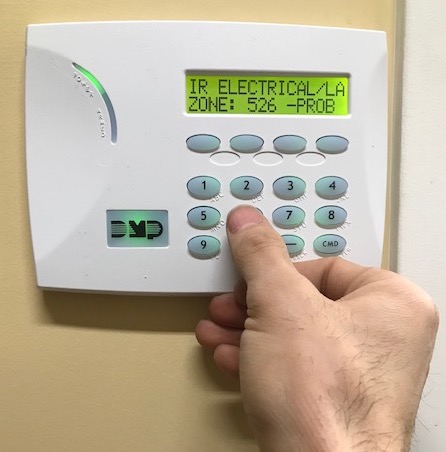To prevent your security system from acts of sabotage, you should ask your installer not to neglect these two major tips:
Tampers and End of line resistors
They are an additional layer of security. They make it possible to detect sabotage and problems with wiring or poorly fixed components of your system.
In this article, I am going to explain the importance of the tampers and the end of line resistors and why they are so important.
1- End of line Resistors
They are electronic components. Installed on the detection devices which are the end zone loop. Their role is to enable the system to distinguish an open circuit, the alarm state and the normal state as well.
In other words, this makes the system more accurate about the zones’ status. And the wiring as well as the connection of the components is more precise.
So let me show you the different ways of wiring and zone’s status regarding the end of line resistors in the following charts.
1- Wiring with no End of line resistor

When there is no end of line resistor installed at a zone end loop, the system faces two possibilities : closed loop or open loop, as a matter of fact, the zone status would be as follows :
| Zone Resistance | Zone status |
| Shorted loop (Closed) | secure |
| Open loop | violated |
2- Wiring with a Single end of line resistor

When an end of line resistor is installed at the end of a zone loop, the system detects when the zone is secured, violated or troubled. The chart of zone status is as follows:
| Zone Resistance | Zone status |
| Shorted loop | Violated |
| Resistor’s value (End of line resistor value) | Secure |
| Open loop | Trouble, Violated |
3- Wiring with a Double end of line resistor

When the double end of line resistor in installed at the end of the zone loop, the system detects the same values as with a single end of line: When the zone is secured, violated or troubled
The chart of zone status is as follows
| Zone Resistance | Zone status |
| Shorted loop | Trouble (Fault) |
| Resistor value | Secure |
| Double resistor value | Violated |
| Open loop | Trouble (Tamper) |
2 – Tamper
The tamper allows to know if any device is poorly fixed or sabotaged.
The detection devices come with tamper terminals, that sends a warning if the cover of the device is poorly closed. Like the motion detectors, door contacts and glass breaks … etc.
Wireless contacts have two tampers. The first warns when the cover is open or poorly closed. The second warns if the contact is not flat on the surface.
The panels are the heart of the systems. Their enclosures must be supervised with a tamper, as a result, opening an enclosure triggers an alarm if the code is not dialed and the systems sends an alarm if the enclosure is not well closed. This prevents from sabotaging the system.
The tamper is installed with the double end of line resistor, the wiring is the following :

The zone status chart is as follows :
| Zone Resistance | Zone status |
| Shorted loop | Trouble (Fault) |
| Resistor value | Secure |
| Double resistor value | Violated |
| Open loop | Tamper |
Conclusion
Tampers and the end of line resistors in security systems are additional layers of security, sensitive institutions require to install their systems with them, on the other hand, many small installations may not attach great importance to this. The article shows their importance and advise not to neglect them.
Related article :
